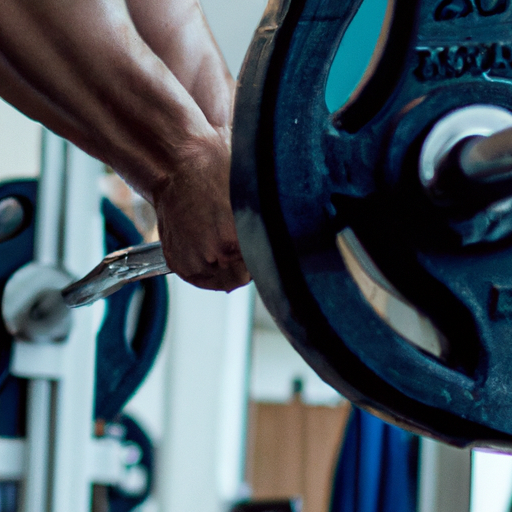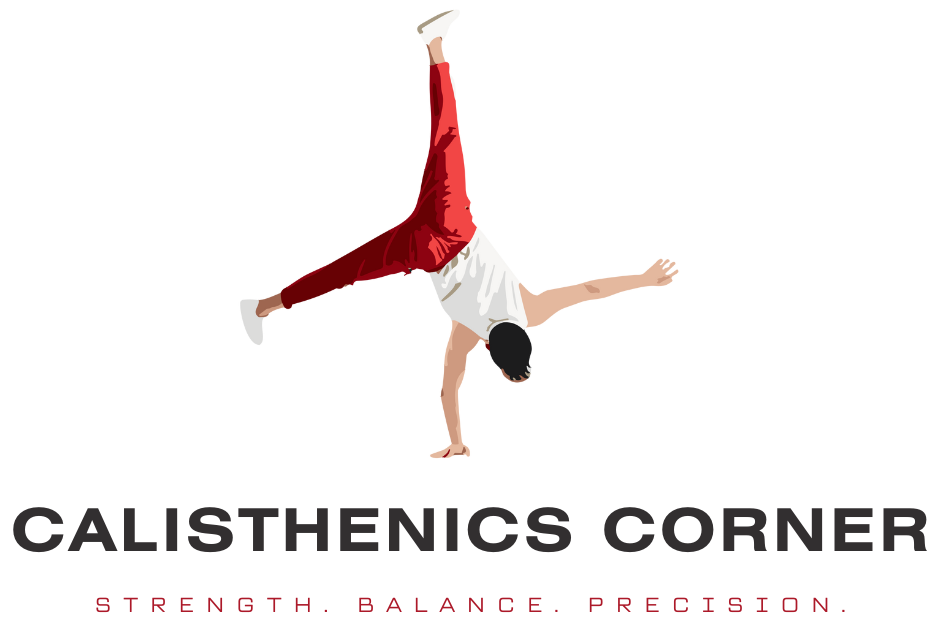If you’re looking to build strength and improve your physique, you may have wondered whether you should focus on calisthenics or weight training. However, why choose when you can have the best of both worlds? Incorporating both calisthenics and weight training into your workout routine can provide a well-rounded approach to fitness, targeting different muscle groups and allowing for variation in your workouts. In this article, we will explore the benefits of both calisthenics and weight training, as well as provide practical tips on how to effectively combine them for optimal results.
Choosing Your Training Schedule
Determining your goals
When embarking on any fitness journey, it is important to establish clear goals. Before deciding on a training schedule that incorporates both calisthenics and weight training, take some time to reflect on what you want to achieve. Are you looking to increase strength and muscle mass? Improve flexibility and mobility? Enhance your overall fitness level? By understanding your goals, you can better tailor your training schedule to help you achieve them.
Establishing a weekly plan
Once you have determined your goals, it’s time to establish a weekly training plan. This involves deciding how many days a week you can commit to working out and how you will divide your time between calisthenics and weight training. For beginners, it is generally recommended to start with 2-3 days of training per week, gradually increasing the frequency as your fitness level improves.
Balancing calisthenics and weight training
Finding the right balance between calisthenics and weight training is crucial to ensure a well-rounded workout routine. Calisthenics exercises primarily use bodyweight to build strength, while weight training incorporates external resistance through dumbbells, barbells, or machines. By combining both forms of training, you can benefit from the advantages each has to offer. Finding the appropriate ratio between the two will depend on your goals and preferences.
Understanding Calisthenics
Defining calisthenics
Calisthenics refers to a form of exercise that utilizes bodyweight movements to improve strength, endurance, and overall fitness. Unlike weight training, which may require equipment or weights, calisthenics exercises rely solely on the resistance provided by your own body. These exercises can range from simple movements like push-ups and squats to more advanced exercises like handstands and muscle-ups.
Benefits of calisthenics
Calisthenics offers numerous benefits for individuals of all fitness levels. One of the primary advantages is its accessibility, as it requires little to no equipment and can be performed anywhere. Additionally, calisthenics exercises engage multiple muscle groups simultaneously, helping to improve overall strength and coordination. Calisthenics also promotes functional movements that translate to real-life activities and can be easily modified to accommodate different fitness levels.
Types of calisthenics exercises
Calisthenics encompasses a wide range of exercises that target various muscle groups and fitness components. Some common calisthenics exercises include push-ups, pull-ups, squats, lunges, planks, and burpees. These exercises can be modified by adjusting the intensity, range of motion, or using equipment like resistance bands to add resistance. Whether you are a beginner or an advanced athlete, calisthenics offers a multitude of exercises to challenge and improve your fitness level.
Understanding Weight Training
Defining weight training
Weight training involves the use of external resistance, such as dumbbells, barbells, or weight machines, to build strength, increase muscle mass, and improve overall body composition. Unlike calisthenics, which primarily uses bodyweight, weight training allows you to progressively overload muscles by continuously increasing the resistance. Weight training exercises can target specific muscle groups or engage multiple muscles simultaneously, depending on the chosen exercises and training program.
Benefits of weight training
Weight training offers various benefits that complement those provided by calisthenics exercises. One of the key advantages is the ability to target specific muscle groups and increase muscle mass. Weight training also improves bone density, promotes fat loss, and enhances overall body composition. Incorporating weights into your training routine can boost metabolism, increase strength, and help prevent muscle imbalances and injuries.
Different types of weight training
There are several types of weight training that you can incorporate into your routine, depending on your goals and preferences. These include traditional strength training, powerlifting, bodybuilding, and functional training. Traditional strength training focuses on compound exercises like squats, deadlifts, and bench presses to build overall strength. Powerlifting involves performing exercises like the squat, bench press, and deadlift with maximal weight. Bodybuilding emphasizes muscle hypertrophy and symmetry through targeted workouts for specific muscle groups. Functional training incorporates exercises that mimic real-life movements to enhance overall functionality and improve strength.
Benefits of Combining Calisthenics and Weight Training
Increasing strength and muscle mass
By combining calisthenics and weight training, you can maximize your strength and muscle-building potential. Calisthenics exercises engage multiple muscle groups, while weight training allows for progressive overload, stimulating muscle growth. The combination of these two training methods provides a balanced approach to developing strength and muscle mass, targeting different muscle fibers and movement patterns.
Improving flexibility and mobility
Calisthenics exercises often require a significant range of motion, promoting flexibility and mobility in the joints and muscles. On the other hand, weight training can sometimes lead to muscle tightness if not complemented with proper stretching and mobility exercises. By incorporating both calisthenics and weight training, you can ensure a well-rounded routine that promotes flexibility and mobility, reducing the risk of injuries and improving overall movement quality.
Enhancing overall fitness level
Both calisthenics and weight training contribute to improving overall fitness. Calisthenics exercises focus on bodyweight movements that enhance cardiovascular fitness, muscular endurance, and body control. Weight training, on the other hand, targets strength, power, and muscle development. By combining these two training methods, you can achieve a well-rounded fitness routine that improves various aspects of your physical fitness, resulting in better overall health and performance.

Considerations for Beginners
Starting with bodyweight exercises
If you are new to calisthenics and weight training, it is advisable to start with bodyweight exercises. Bodyweight exercises can help you establish a solid foundation of strength, stability, and proper movement patterns before progressing to added resistance with weights. Some beginner-friendly calisthenics exercises include push-ups, squats, lunges, planks, and assisted pull-ups. Mastering these exercises with good form and control will lay the groundwork for incorporating weight training into your routine.
Gradually adding weights
As you become more comfortable with bodyweight exercises, you can gradually incorporate weights into your training routine. Start with lighter weights and focus on mastering proper form and technique before progressing to heavier loads. This gradual progression allows your muscles, tendons, and ligaments to adapt to the added stress, reducing the risk of injuries. It is important to listen to your body and only increase weights when you feel ready and confident in your abilities.
Seeking professional guidance
If you are unsure about how to start incorporating calisthenics and weight training into your routine, it is wise to seek guidance from a fitness professional or certified trainer. They can assess your current fitness level, help you set realistic goals, and design a customized training program that suits your needs. A trainer can also provide proper instruction on exercise technique, ensure you’re performing exercises safely and effectively, and provide guidance on progressing your workouts over time.
Designing a Balanced Workout Routine
Determining frequency and duration
When designing a workout routine that combines calisthenics and weight training, it is crucial to determine the frequency and duration of your workouts. This will depend on your goals, available time, and recovery ability. Beginners may start with 2-3 days of training per week, gradually increasing the frequency as they build strength and endurance. Each workout session should last between 45 minutes to an hour, allowing enough time to target different muscle groups effectively.
Splitting the workouts
To ensure a well-rounded workout routine, it is beneficial to split your workouts into different muscle groups or movement patterns. For example, you can dedicate one day to upper body exercises, another day to lower body exercises, and a third day to compound movements that engage multiple muscle groups. This allows for proper recovery and prevents overtraining specific muscle groups while still challenging your entire body throughout the week.
Incorporating compound exercises
Both calisthenics and weight training offer a variety of exercises that target specific muscle groups. However, it is important to incorporate compound exercises into your routine. Compound exercises engage multiple muscle groups and joints, promoting functional strength and overall muscle development. Examples of compound exercises include squats, deadlifts, bench presses, pull-ups, and push-ups. By including these exercises, you can ensure a balanced workout routine that maximizes muscle recruitment and overall strength gains.
Effective Techniques for Integration
Supersetting calisthenics and weight training
Supersetting involves alternating between two exercises with little to no rest in between. This technique can be applied to calisthenics and weight training exercises to maximize efficiency and challenge your muscles in different ways. For example, you can perform a set of push-ups immediately followed by a set of dumbbell rows, targeting both your chest and back muscles. Supersetting allows you to save time during your workouts while maintaining intensity and effectively integrating both calisthenics and weight training exercises.
Circuit training with weights and bodyweight
Circuit training involves performing a series of exercises back-to-back, usually targeting different muscle groups or movement patterns. By combining calisthenics and weight training exercises into a circuit, you can create a high-intensity workout that challenges both your strength and cardiovascular fitness. For example, you can alternate between sets of push-ups, squats, dumbbell shoulder presses, and lunges with minimal rest. Circuit training allows you to work multiple muscle groups and keep your heart rate elevated throughout the workout.
Combo exercises for simultaneous training
Another effective technique for integrating calisthenics and weight training is performing combo exercises. Combo exercises involve combining a calisthenics movement with a weight training movement into one fluid motion. This allows you to simultaneously challenge your strength, stability, and coordination. An example of a combo exercise is the squat to overhead press, where you perform a squat and immediately transition into an overhead press with dumbbells or a barbell. Combo exercises provide a unique and dynamic training stimulus, enhancing both calisthenics and weight training benefits.
Progression and Tracking
Tracking your workouts
To ensure progress and maintain motivation, it is essential to track your workouts. Keep a record of the exercises, sets, reps, and weights used during each training session. This allows you to monitor your progress over time and make informed adjustments to your routine. Tracking your workouts also helps you identify any plateaus or areas that may need improvement, allowing you to modify your training program accordingly.
Progressive overload for both calisthenics and weight training
Progressive overload is a fundamental principle in both calisthenics and weight training. It involves gradually increasing the demands placed on your muscles to stimulate growth and adaptation. In calisthenics, progressive overload can be achieved by progressing to more challenging variations of exercises or increasing the number of repetitions or sets. In weight training, progressive overload can be attained by increasing the weight lifted, the number of sets, or the number of repetitions performed. By consistently applying progressive overload, you can ensure continuous improvement and prevent training plateaus.
Modifying and adjusting routines according to progress
As you progress in your training journey, it is important to periodically modify and adjust your routines. This can involve changing exercises, increasing weights, adjusting training volume, or incorporating new variations. Our bodies adapt to training stimuli over time, so it is crucial to provide new challenges to continue progressing. By regularly evaluating your progress and making necessary adjustments, you can keep your workouts fresh and effectively stimulate new muscle growth and strength gains.

Proper Warm-Up and Cool-Down
Importance of warm-up
A proper warm-up is crucial before engaging in any exercise routine, including calisthenics and weight training. It helps prepare your body for physical activity by increasing blood flow, raising body temperature, and activating the muscles you will be using. A warm-up should consist of dynamic movements that mimic the exercises you will perform during your workout. This can include activities like jogging, leg swings, arm circles, and bodyweight squats. A sufficient warm-up reduces the risk of injuries, enhances performance, and primes your body for optimal training.
Dynamic stretching for calisthenics
Dynamic stretching is particularly beneficial before calisthenics exercises, as it helps improve flexibility, range of motion, and muscle activation. Dynamic stretches involve controlled movements through a full range of motion, avoiding static holds. Examples of dynamic stretches for calisthenics include leg swings, arm circles, standing torso twists, and shoulder dislocates. Dynamic stretching prepares your muscles and joints for the dynamic movements involved in calisthenics, improving performance, and reducing the risk of strains or pulls.
Mobility exercises for weight training
For weight training, incorporating mobility exercises in your warm-up routine is crucial. These exercises focus on improving joint mobility and muscle elasticity to enhance your range of motion and optimize exercise technique. Foam rolling, band distractions, and joint mobilizations are effective techniques to incorporate during your warm-up. By addressing specific mobility limitations, you can prevent compensatory movements, maintain proper form, and improve overall training effectiveness.
Benefits of cooling down
Just as warming up is essential, cooling down after a workout is equally important. A proper cool-down routine allows your body to gradually transition from exercise to a resting state, preventing blood from pooling in your extremities. Cooling down can involve light cardio exercises like walking or jogging, followed by static stretches that target the muscles you have worked. A cool-down helps decrease muscle soreness, promotes recovery, and can aid in preventing post-exercise dizziness or fainting.
Conclusion
Reaping the benefits of calisthenics and weight training
By combining calisthenics and weight training, you can reap the numerous benefits these two forms of exercise offer. Calisthenics improves overall body control, endurance, and functional strength, while weight training enhances muscle mass, strength, and body composition. Integrating both into your routine allows for a well-rounded approach to fitness, targeting various fitness components and maximizing your overall physical potential.
Personalizing your routine
It’s important to remember that everyone’s fitness journey is unique, and what works for one person may not work for another. As you incorporate calisthenics and weight training into your routine, take the time to personalize it to your specific goals, preferences, and abilities. While the outlined principles provide a solid foundation, don’t be afraid to experiment, listen to your body, and make adjustments to find what works best for you.
Enjoying the journey to a stronger and fitter you
Embarking on a training routine that combines calisthenics and weight training is an exciting and rewarding journey towards a stronger and fitter version of yourself. Embrace the process and enjoy each workout, celebrating the progress you make along the way. With consistency, dedication, and a personalized approach, you can achieve your fitness goals and enjoy the lifelong benefits of a balanced and integrated training regimen.







